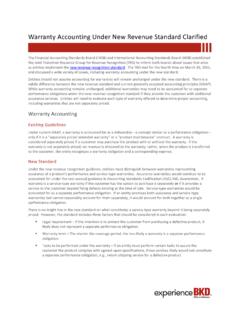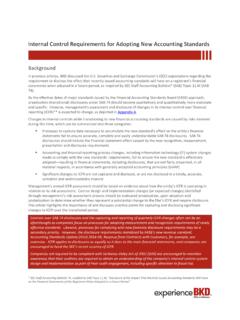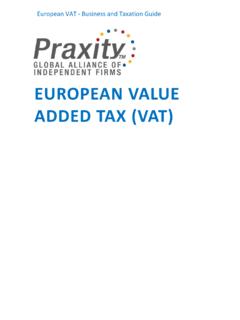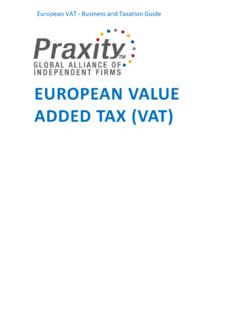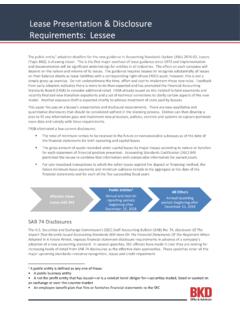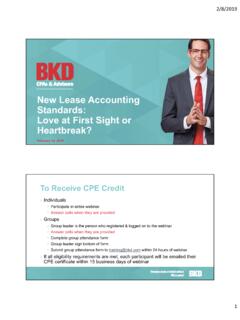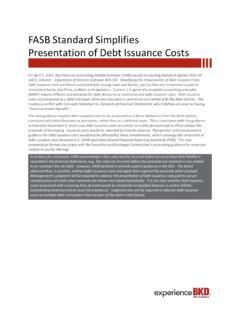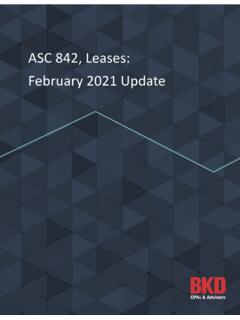Transcription of Implementing Revenue Recognition for Health Care …
1 8/3/20181 Implementing Revenue Recognition for Health care OrganizationsAUGUST 6, 2018TO RECEIVE CPE CREDIT Individuals Participate in entire webinar Answer polls when they are provided Groups Group leader is the person who registered & logged on to the webinar Answer polls when they are provided Complete group attendance form Group leader sign bottom of form Submit group attendance form to 24 hours of webinar If all eligibility requirements are met, each participant will be emailed their CPE certificate within 15 business days of webinar8/3/20182 INTRODUCTIONSB rian Pavona, CPAM anaging McKay, CPAM anaging & Key Principles8/3/20183 ASU 2014-09 Revenue FROM CONTRACTS WITH CUSTOMERS Effective for Public Business Entities (& not-for-profit entities that are conduit debt obligors)
2 In fiscal years & interim periods beginning after December 15, 2017 Effective for all other entities in fiscal years beginning after December 15, 2018 Principles-based approach instead of a rules-based approachOBJECTIVES OF THE NEW Revenue STANDARD *IASB: International Accounting Standards Board/FASB: financial Accounting Standards Board FASB/IASB* converged standard Remove inconsistencies & weaknesses in existing requirements to improve comparability Provide more useful information through improved disclosure requirements Provide a more robust framework for addressing Revenue issues Simplify the preparation of financial statements by reducing the number of requirements by having one Revenue framework8/3/20184 ASU 2014-09 Revenue FROM CONTRACTS WITH CUSTOMERSThis ASU superseded Health care industry-specific guidance & substantially all existing
3 Revenue Recognition guidance & added significant interim & annual disclosures recognizing Revenue to depict the transfer of promised goods or services to customers in an amount that reflects the consideration to which the entity expectsto be entitled in exchange for those goods or servicesPROMISED GOODS OR SERVICES TO CUSTOMERSCONSIDERATION TO WHICH THE ENTITY EXPECTS TO BE ENTITLEDCORE PRINCIPLENEW Revenue Recognition PROCESSI dentify contract with a customerIdentify performance obligationsDetermine the transaction priceAllocate the transaction priceRecognize Revenue when/as a performance obligation is satisfied8/3/201859 EXCEPTIONS Lease contracts Insurance contracts financial instruments Guarantees Nonmonetary exchanges in the same line of business to facilitate sales to customersEXCLUSIONS Contributions Collaborative agreementsASU 2014-09 Revenue FROM CONTRACTS WITH CUSTOMERSSCOPE OF NEW STANDARDAll entities that enter into contracts with customers Public, private.
4 Not-for-profit Regardless of industry10 Insurance ContractException Entities that fall under ASC 944: financial Services Insurance Entitiesare excludedHowever .. Entities that fall under ASC 954: Health care Entitiesare in scope & so their insurance-related revenues need to be considered Arrangements seen within Health care entities that are in-scope include the following examples Claims handling/ASO arrangements Capitation & prepaid arrangements ASU 2014-09 Revenue FROM CONTRACTS WITH CUSTOMERS8/3/2018611 Contributions & Grants Exclusion While excluded from ASU 2014-09, new guidance was issued recentlyOn June 21, 2018, the FASB Issued ASU 2018-08.
5 Clarifying the Scope & the Accounting Guidance for Contributions Received & Contributions Made ASU 2014-09 Revenue FROM CONTRACTS WITH CUSTOMERST ransition Methods & Guidance 8/3/2018713 TRANSITION APPROACHES*assumes a public entity with a December 31 year-endTransitionApproach20172018 Date of CumulativeEffect Adjustment*Full RetrospectiveRestate for all contractsApply to all contractsJanuary 1, 2017 Full Retrospective Using One or More Practical ExpedientsRestate for all contracts except contracts covered by practical expedientsApply to all contractsJanuary 1, 2017 Modified RetrospectiveNo contracts restated.
6 Reported based on legacy guidanceApply to all contractsJanuary 1, 2018 TRANSITION HELP TRG Advises the Boards Does not havestandard-setting authorityAICPA financial reporting Executive Committee (FinREC)FASB/IASBAICPASECF ocus on consistent applicationAICPA Revenue Recognition Working GroupAICPA 16 Industry Task Forces (RRTF)Focus on accounting questions that may require standard settingFocus on internal controls, systems & processes8/3/20188 aicpa Revenue Recognition TASK FORCESA erospace & DefenseHospitalityAirlinesInsuranceAsset ManagementNot-for-profitBroker-DealersOi l & GasConstruction ContractorsPower & UtilityDepository InstitutionsSoftwareGamingTelecommunicat ionsHealth CareTimeshareAICPA Revenue Recognition TASK FORCES Develop a new Accounting Guide on Revenue Recognition Guide to provide helpful hints & illustrative examples on how to apply the standard Guidance will not be prescriptive but instead is intended to be a resource Full
7 Implementation issues are posted for comment after review from the overall Revenue Recognition Working Group & FinREC List of issues for the Health care industry is posted on the aicpa care ISSUES IDENTIFIED BY THE aicpa Revenue Recognition TASK FORCEI ssues identified & finalized Revenue Recognition for self-pay patients Application of Steps 1 & 3 Application of the portfolio approach Disclosure requirements Performance obligations (other than CCRCs)Issues identified & open Third-party estimates To be published in the next version of the Revenue Recognition guide Bundled payments & risk sharing arrangements To be published in the next version of the Revenue Recognition guide Contract acquisition costs Final paper to be presented to FIN Rec in September of 2018 Identifying the performance obligation & Recognition of refundable & nonrefundable entrance fees for CCRCs.
8 Including significance financing component considerations & future service obligations Final paper to be presented to FIN Rec in September of 2018 Health care ISSUES IDENTIFIED BY THE aicpa Revenue Recognition TASK FORCE8/3/201810 Health care ISSUES BEING CONSIDERED BY HFMA PRINCIPLES & PRACTICES BOARDC apitation revenueMedicaid supplemental payment programsUpdate of HFMA Statement 15 on Bad Debt & Charity CareThe effect of Revenue Recognition on Medicare cost reportingCommon Industry Implementation Challenges8/3/2018111 STEP 1 IDENTIFY CONTRACT(S) WITH A CUSTOMERA legally enforceable contract can be written, oral or implied by an entity s customary business practices.
9 & needs to meet all of the following requirementsIt has commercial substanceThe entity can identify each party s rights regarding goods or servicesThe parties have approved the contract & are committed to their obligationsThe entity can identify the payment terms for the goods or servicesIt is probable the entity will collect the amount of consideration to which it will be entitledBefore applying the model in the standard to a contract, it must be probable that the entity will collect substantially all of the consideration to which it is entitled in exchange for the goods & services that will be transferred to the customerCOLLECTIBILITY CONSIDERATIONSA Health care entity may make this determination based on past experience with that patient or class of similar patientsIf this collectability threshold is not met.
10 A contract with a patient does not exist within the scope of the standardAssessment is based on both the customer s ability & intent to pay as amounts become dueMay be difficult for entities to assessNo such thing as cash basis8/3/2018123 STEP 3 IDENTIFYING THE TRANSACTION PRICET ransaction price is the amount of consideration an entity expects to be entitled toVariable considerationConsideration payable to a customerSignificant financing componentExplicit & implicit price concessionsConstraint of revenueIMPLICIT PRICE CONCESSION CONSIDERATIONSC ontinues to provide services to a patient (or patient class) even when historical experience indicates that it is not probable that the entity will collect substantially all of the discounted charges (gross or standard charges less any contractual adjustments or discounts) in the contractCustomary business practice of not performing a credit assessment prior to providing servicesWhat should we consider?
